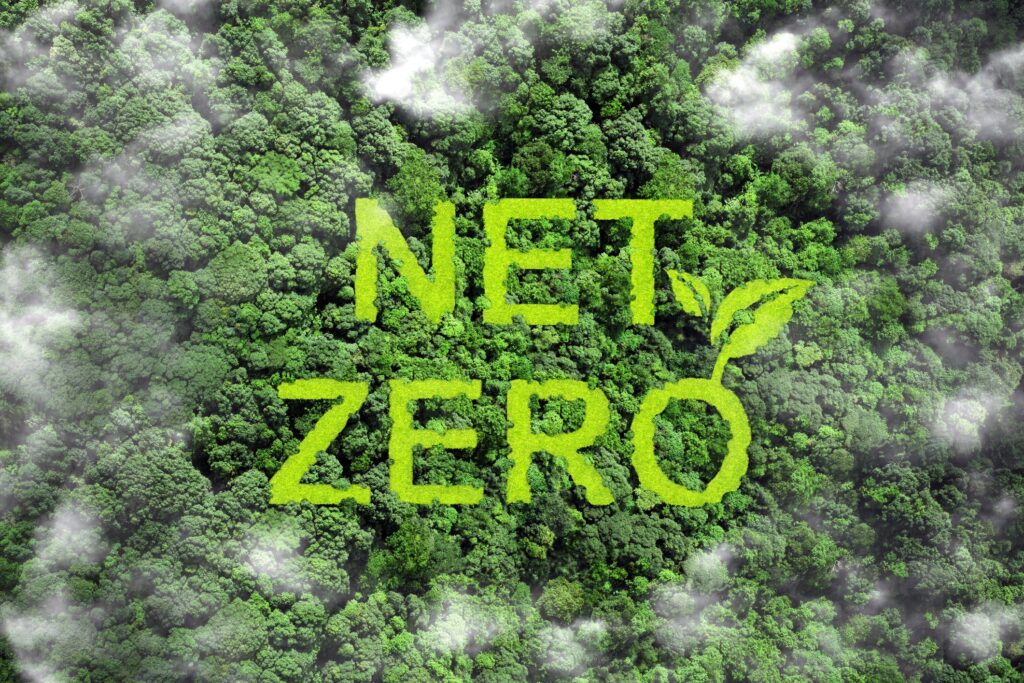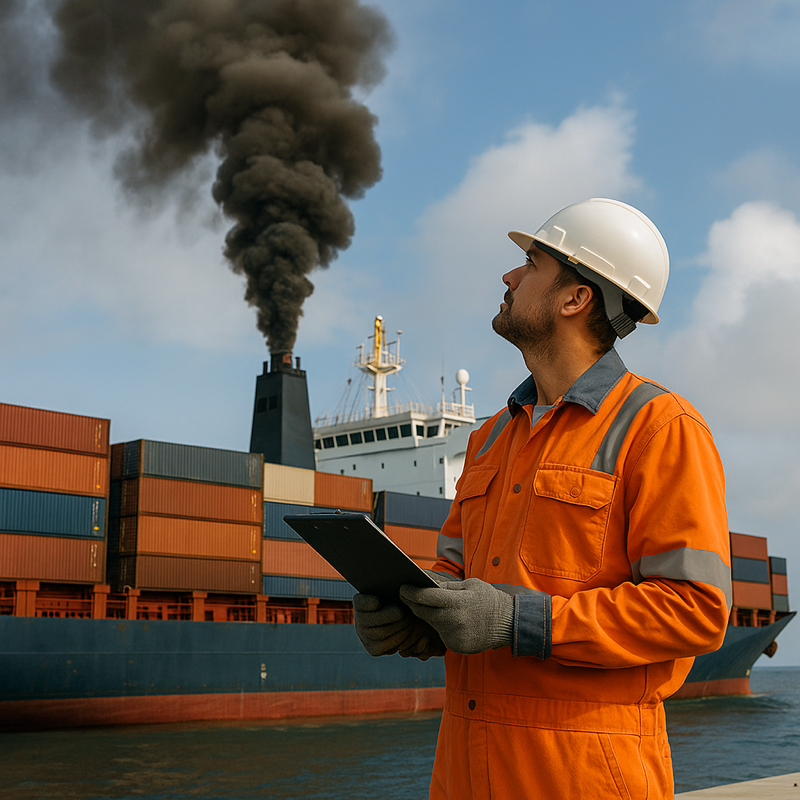According to the U.S. Environmental Protection Agency, the transportation sector accounts for approximately 29% of greenhouse gas (GHG) emissions, making it the most significant contributor to climate change in the U.S. The supply chain, with its reliance on transportation, including trucks, ships, airplanes, and trains, is a big contributor to these emissions due to the use of fossil fuels and the size and scale of global supply chains.
To combat climate change and work toward a greener future, businesses today must focus on sustainability within their supply chains, specifically decarbonizing their shipping. The supply chain offers a huge potential for positive change by adopting sustainable practices like optimizing routes, using alternative fuels, and improving operational efficiency. With more investment in innovative technologies, the entire industry can help propel a transition to greener supply chains.
One goal often referenced is for the U.S. transportation sector to achieve a net-zero emission economy by 2050. However, we cannot afford to wait until 2050 to see what new innovations may emerge to help support decarbonization efforts. The climate crisis is a collective responsibility, and the time for action is now.
Today, we’re discussing the most common challenges to supply chain sustainability and three strategies for handling them. Knowing the obstacles, having effective solutions, and implementing them as part of a company’s sustainability program is critical to the success and realization of a greener future.
Despite Desperate Need to Lower Emissions, Challenges Remain for Today’s Shippers
It’s not uncommon for people to underestimate the challenges associated with supply chain decarbonizing. Government officials, corporate executives, and customers may be setting expectations when they don’t fully understand what the process requires. While there is a growing recognition of the need to reduce emissions, there is less awareness of what makes for sustainable shipping. There are various obstacles to navigate, which can keep some shippers from starting their sustainability journey.
Obstacle 1: Collecting emission data for consistent reporting across different carriers
As the shipping industry involves multiple stakeholders, from carriers to logistics providers, each may bring its own system and data collection methods. Ensuring consistent and accurate emissions reporting requires standardized protocols, data-sharing agreements, and technological integration. The complexity lies in aggregating data from various sources, harmonizing measurement methodologies, and establishing a transparent and reliable reporting framework that enables meaningful emissions reduction targets.
Obstacle 2: Planning for how to cohesively mitigate current GHG emissions
Developing effective strategies to reduce emissions requires a complete understanding of the logistics within the supply chain, including transportation modes, operational processes, and energy sources. Shippers must assess their current carbon footprint, identify the most significant sources of emissions, and explore mitigation measures like route optimization, using alternative modes of transport, and fleet efficiency improvements. Coordinating these efforts across multiple stakeholders and aligning them with broader sustainability goals can be daunting and require careful planning, collaboration, and investment.
Obstacle 3: Purchasing quality offsets and avoiding greenwashing claims
As emissions are reduced within the value chain, offsetting the remaining emissions through verified and credible projects is a necessary next step. Shippers have a variety of offset programs available to them. They must ensure they meet rigorous standards— transparency, permanence, and additionality—to confirm that the resulting carbon credits are truly meaningful. Using a credible carbon offset provider also protects organizations from greenwashing claims so that they can have confidence in the quality of their contributions.
Obstacle 4: Steep learning curve on decarbonization strategies as well as regulations
The shipping industry is changing rapidly with emerging technologies and evolving regulatory frameworks. Shippers must keep pace with the latest developments, understand the feasibility and applicability of different decarbonization strategies, and evaluate their economic and environmental implications. Complying with a complex web of international and national regulations brings an added layer of complexity, requiring shippers to stay informed and continue to adapt their operations. Education, research, and expert collaboration are needed to effectively tackle logistics decarbonization.
Innovative Solutions Lead Toward a Sustainable Future
The urgent need to address climate change and promote sustainability has led to a wave of innovative solutions. From reimagining logistics and transportation systems to leaning into renewable energy, forward-thinking organizations, and industry leaders are driving transformative changes. Some of these approaches combine technology, collaboration, and creative thinking, for well-rounded solutions contributing to a future where supply chains are efficient, resilient, environmentally conscious, and socially impactful. Here are three important strategies for shippers to consider.
1. Expert Mitigation
Shippers can explore many different options to mitigate their current emissions, which may include analyzing their operational processes, making data-driven freight procurement decisions, optimizing transportation routes, and exploring alternative fuel options. Each of these strategies requires an expert level of planning and implementation to be effective, but when executed correctly, the benefits are not only a reduction in emissions but also reduced costs through operational efficiency.
Offsetting also has a role, allowing shippers to address the remaining emissions that cannot be mitigated directly. Offset programs are opportunities to invest in projects that reduce GHG emissions or promote sustainable development elsewhere, giving shippers a valuable tool to achieve carbon neutrality.
2. A Holistic Approach
As a lack of consistent methodology across different carriers is a big hurdle for shippers, they must have a unified approach in place to address this challenge and unlock accurate and standardized data. One option is a holistic platform, such as Greenabl’s, for measuring, mitigating, and offsetting emissions. This gives shippers a centralized hub where they can access consistent measurements and methodologies even across different sources, explore reliable offset programs, and stay informed about the latest developments in technology and regulations.
This unified approach allows shippers to comprehensively understand their emissions and make informed decisions. With consolidation into a single platform, shippers can streamline their sustainability efforts for a more coherent and impactful approach to managing their carbon footprint.
3. Certified Sustainability
In seeking out certified sustainability, frameworks such as the Gold Standard and VERRA ratings provide robust standards for measuring and verifying emissions reduction efforts. By using recognized frameworks, shippers can increase the transparency of their sustainability initiatives.
Certified carbon credits represent real, quantifiable emissions reductions or removals achieved through projects such as renewable energy installations, forest conservation, or community initiatives. Shippers can demonstrate their commitment to supporting verified projects with a positive environmental and social impact and avoid the risks of greenwashing. Knowledgeable partners give shippers the tools and resources to navigate the complexities of sustainability with confidence, while adding a level of accountability and credibility.
The Future of the Supply Chain is Green
The urgent need for decarbonization cannot be overstated. Still, even though climate change is often painted with a bleak outlook, shippers now have the tools and strategies available to empower their decarbonization efforts. They can fine-tune their supply chains to operate with greater efficiency to reduce emissions and work with partners that support their vision of sustainability throughout the value chain. By optimizing processes, adopting sustainable practices, and leveraging technology, organizations can achieve a decarbonized supply chain that meets the demands of customers and stakeholders and helps to mitigate the risks brought by climate change.
Greenabl’s Platform for Sustainability
With this goal of helping decarbonize shipping, Greenabl provides a holistic platform to give organizations easy access to the necessary tools. Shippers can connect with best-in-class providers and a comprehensive suite of tools and services that streamline their sustainability efforts.
Greenabl has partnered with Searoutes to provide shippers with accurate and standardized GHG emissions data to inform their freight procurement decisions and help them track progress. For high-quality carbon offset programs, shippers can leverage the Cloverly platform, which exclusively features offsets that meet the rigorous criteria of the Gold Standard and VERRA ratings, guaranteeing their credibility and environmental impact. As the U.S. branch of the Europe-based Lean & Green program, Greenabl’s methodology helps shippers evaluate their current performance and identify areas for continued improvement. With these industry-leading technologies and frameworks, shippers can optimize their sustainability efforts, make informed decisions, and drive meaningful progress toward a greener future.
Reduce Friction in Your Decarbonization Approach with Greenabl
The latest reports show that action cannot wait. The World Meteorological Organization has reported a two-thirds chance that between now and the end of 2027, the world will exceed the Paris Agreement’s goal of a sub-1.5 degree Celsius climate change. There is plenty of work to be done, especially in the categories of supply chain and shipping.
Greenabl’s mission is not just to support shipping decarbonization. We’re also making it simpler and more attainable. Our platform tools were designed and brought together specifically to remove the friction that often comes with shippers’ efforts to reduce their emissions, making it easier than ever for shippers to strive toward sustainability.
To start your decarbonization journey, schedule a call with Greenabl today.


